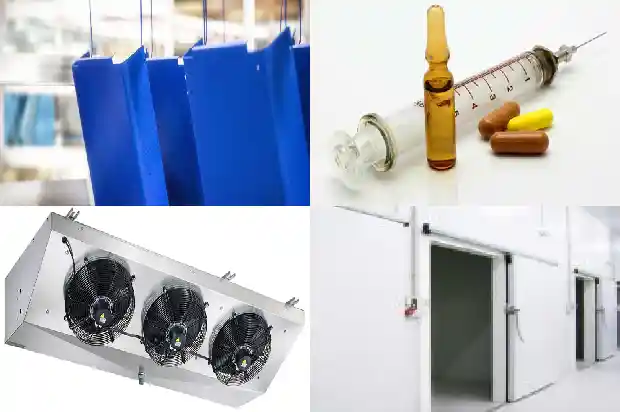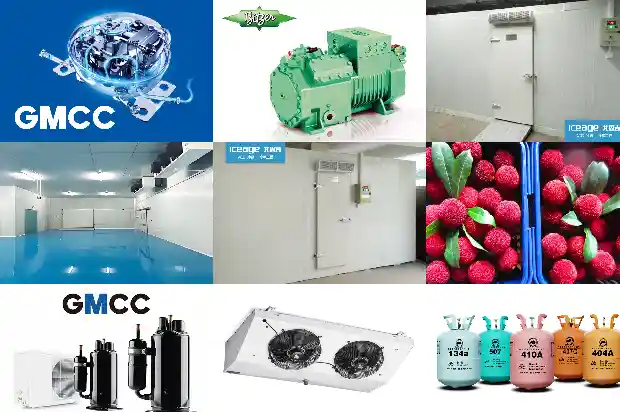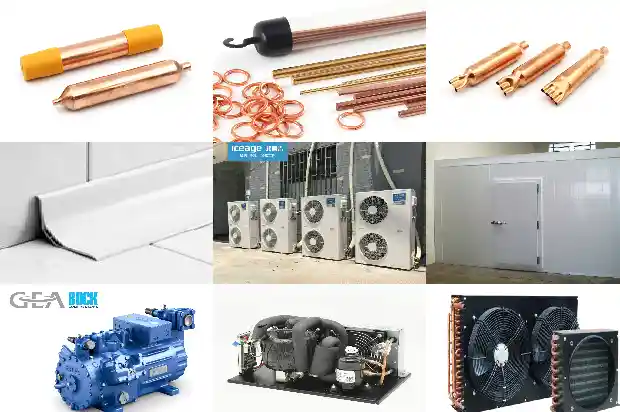What Misconceptions Should Be Avoided in Low - temperature Refrigeration System Repairs
2025-02-17
Introduction
Low - temperature refrigeration systems are different from ordinary air - conditioners and medium - temperature or medium - low - temperature refrigeration systems. They are more special in terms of structure, working fluid, and temperature, and are widely used in the pharmaceutical industry. The technology of large - scale low - temperature refrigeration equipment is a strategic and supportive key technology in the Chinese industrial field.
Low - temperature refrigeration systems are different from ordinary air - conditioners and medium - temperature or medium - low - temperature refrigeration systems. They are more special in terms of structure, working fluid, and temperature, and are widely used in the pharmaceutical industry. The technology of large - scale low - temperature refrigeration equipment is a strategic and supportive key technology in the Chinese industrial field.
Large - scale low - temperature refrigeration equipment refers to a low - temperature refrigeration system with a refrigeration temperature of 20K (-253°C) or lower, a refrigeration capacity of hundreds to tens of thousands of watts, integrating precision processing, gas - bearing helium turbine expander technology, low - temperature heat transfer and insulation technology, and high - efficiency and safe integrated control technology.
Although technology is constantly innovating and equipment is being upgraded, any system or equipment needs maintenance. If there are certain malfunctions, repair work is required. There is a certain amount of refrigerant in the low - temperature refrigeration system, and single - machine auto - cascade refrigeration uses a single compressor. Although there is only one compressor, different refrigeration equipment may use different refrigerants.
For example, for Freon, once the pipeline leaks, expanded gas will spray out when welding the remaining connection of the compressor. Therefore, during welding, operators need to be careful and no part of the body should be close to the pipe opening to prevent safety accidents and unnecessary troubles.
Relevant experts suggest that after a malfunction occurs in a low - temperature refrigeration system, don't repair it based on guesswork. For example, the operation of a compressor doesn't mean there is no problem with the compressor. "When there is a leak in the system, the compressor is still running, but when the pipeline is cut to test the compressor, there is no gas in the compressor, and then it's hard to clarify the cause of the malfunction!" said the expert. After a malfunction occurs, maintenance personnel can be invited for inspection and let them make the judgment.
In addition, the compressor oil in the low - temperature refrigeration system will gush out with the eruption, and some people may mistake it for water, but it's not necessarily the case. For operators, how to distinguish between oil and water? Some equipment manufacturers have given suggestions: "Operators can burn it with a welding torch. If there is a hissing sound, the oil contains water, and they need to be alert to the occurrence of ice blockage.
Also, the heat dissipation of the condenser in the low - temperature refrigeration system is very important. Some people may think that the hotter the condenser, the better. They believe that if it's hot outside, it will be cold inside. In fact, this statement is wrong.
Many users choose copper pipes for the pipes in the low - temperature refrigeration system. The industry says that such pipes are indeed corrosion - resistant and have a thick enough wall when used in a low - temperature refrigeration system. But after many tests, the frosting of iron pipes in the low - temperature refrigeration system is more obvious than that of copper pipes. It can be seen that copper pipes have good heat - dissipation performance, but when used in the evaporator, the heat preservation is not good. So, the frosting effect of copper pipes doesn't seem as ideal as that of iron pipes.
Equipment manufacturers also remind that when replacing the compressor in the low - temperature refrigeration system, a larger model is not necessarily better. The matching between the compressor and the system should be reasonable. Under the condition that the condenser, evaporator, capillary tube, and the amount of refrigerant added are fixed, if a larger compressor is replaced, it will also overheat. Because the lifespan of the compressor will not be very long. Similarly, if a smaller compressor is replaced, the refrigeration effect will not be good, and the evaporator will not frost completely.

For example, for Freon, once the pipeline leaks, expanded gas will spray out when welding the remaining connection of the compressor. Therefore, during welding, operators need to be careful and no part of the body should be close to the pipe opening to prevent safety accidents and unnecessary troubles.
Relevant experts suggest that after a malfunction occurs in a low - temperature refrigeration system, don't repair it based on guesswork. For example, the operation of a compressor doesn't mean there is no problem with the compressor. "When there is a leak in the system, the compressor is still running, but when the pipeline is cut to test the compressor, there is no gas in the compressor, and then it's hard to clarify the cause of the malfunction!" said the expert. After a malfunction occurs, maintenance personnel can be invited for inspection and let them make the judgment.

In addition, the compressor oil in the low - temperature refrigeration system will gush out with the eruption, and some people may mistake it for water, but it's not necessarily the case. For operators, how to distinguish between oil and water? Some equipment manufacturers have given suggestions: "Operators can burn it with a welding torch. If there is a hissing sound, the oil contains water, and they need to be alert to the occurrence of ice blockage.

Also, the heat dissipation of the condenser in the low - temperature refrigeration system is very important. Some people may think that the hotter the condenser, the better. They believe that if it's hot outside, it will be cold inside. In fact, this statement is wrong.

Many users choose copper pipes for the pipes in the low - temperature refrigeration system. The industry says that such pipes are indeed corrosion - resistant and have a thick enough wall when used in a low - temperature refrigeration system. But after many tests, the frosting of iron pipes in the low - temperature refrigeration system is more obvious than that of copper pipes. It can be seen that copper pipes have good heat - dissipation performance, but when used in the evaporator, the heat preservation is not good. So, the frosting effect of copper pipes doesn't seem as ideal as that of iron pipes.
Equipment manufacturers also remind that when replacing the compressor in the low - temperature refrigeration system, a larger model is not necessarily better. The matching between the compressor and the system should be reasonable. Under the condition that the condenser, evaporator, capillary tube, and the amount of refrigerant added are fixed, if a larger compressor is replaced, it will also overheat. Because the lifespan of the compressor will not be very long. Similarly, if a smaller compressor is replaced, the refrigeration effect will not be good, and the evaporator will not frost completely.
Related Articles
- Eight Misconceptions in Refrigeration Equipment Repair
- Why Does the Evaporation Temperature of the Refrigeration System Drop Too Low? And Why is the Condensing Pressure Too High?
- Introduction to the Advantages of Dual - temperature Cold Storage
- What are the characteristics of low-temperature cold storage?
- Requirements of Cold Storage Insulation for Maintaining Stable Temperature Inside
- Temperature Gradient Differences between Deep Foundation and Surface of Civil Cold Storage
- Temperature Requirements for Various Cold Storages
- Is the heating effect of air source heat pump air conditioner with enhanced vapor injection really good under low temperature conditions?
- 15 Reasons for Excessive Temperature Rise of Motors
- Types and Temperature Requirements of Seed Cold Storages
- Influence of Condensing Temperature Variation on Vapor Compression Refrigeration System
- Introduction to the Relationship between Refrigerants and Cold Storage Temperatures
- What are the effects of pressure and temperature on the refrigeration system of a cold storage?
- Application of Economizer in Air-cooled Heat Pumps and Low-temperature Screw Compressors
- Common faults in refrigeration system (discharge temperature and pressure)
- How to distinguish the quality of refrigeration compressor unit of constant temperature and humidity test chamber?
- Nine Essential Maintenance Methods for Low Temperature Cold Storage After Installation
- High Power Consumption of Constant Temperature Freezer and Its Solutions
